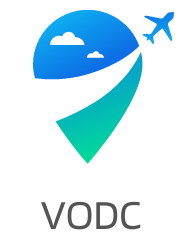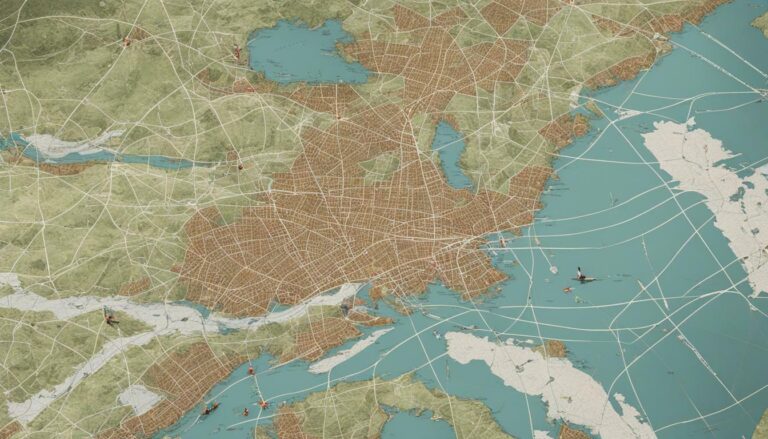Guide: How to Immigrate to Canada in 5 Simple Steps as a Skilled Worker
Are you a skilled worker looking to immigrate to Canada? Follow our comprehensive guide to discover how you can make your dream a reality in just 5 simple steps.
Key Takeaways:
- Check if you meet the eligibility criteria for the Federal Skilled Worker Program (FSWP)
- Submit your Express Entry profile on the website of Immigration, Refugees and Citizenship Canada (IRCC)
- Wait for an Invitation to Apply (ITA) for permanent residence
- Submit your permanent residence application to IRCC
- Move to Canada and gain permanent residence status within six months
Understanding the Federal Skilled Worker Program (FSWP)
The first step in your journey to immigrate to Canada as a skilled worker is to understand the eligibility criteria for the Federal Skilled Worker Program (FSWP). This program is designed to attract skilled workers who can contribute to the Canadian economy.
To qualify for the FSWP, you must meet certain requirements. Firstly, you need to have at least one year of full-time or equivalent part-time work experience in a skilled occupation. This work experience should be in a qualifying occupation listed in the National Occupational Classification (NOC). It is important to note that not all occupations are considered eligible for the program.
| Requirement | Description |
|---|---|
| Work Experience | At least one year of full-time or equivalent part-time work experience in a skilled occupation. |
| Language Skills | Language proficiency equivalent to a Canadian Language Benchmark (CLB) 7 in English or French. |
| Educational Credential | A Canadian educational credential or an Educational Credential Assessment (ECA) report for foreign credentials. |
In addition to work experience, you must also demonstrate language proficiency in either English or French. The minimum language requirement is Canadian Language Benchmark (CLB) 7, which assesses your ability to communicate effectively in the workplace. To prove your language skills, you may need to take language tests such as the International English Language Testing System (IELTS) or the Test d’évaluation de français (TEF).
Lastly, you need to have a Canadian educational credential or an Educational Credential Assessment (ECA) report for foreign credentials. An ECA evaluates your education to determine its Canadian equivalency. This ensures that your foreign education is recognized and valued in Canada.
The Federal Skilled Worker Program offers a pathway for skilled workers to immigrate to Canada based on their qualifications and work experience. By meeting the eligibility criteria, including work experience, language skills, and educational credentials, you can begin your journey towards a new life in Canada.
Submitting Your Express Entry Profile
Once you have determined that you meet the eligibility criteria for the Federal Skilled Worker Program, it’s time to submit your Express Entry profile on the Immigration, Refugees and Citizenship Canada (IRCC) website. The Express Entry system is an online platform that manages and processes applications for permanent residence in Canada. It allows skilled workers to submit their profiles and be considered for various immigration programs, including the Federal Skilled Worker Program.
The first step in the process is to create an online account on the IRCC website. Once you have registered, you will need to provide personal information, such as your name, date of birth, contact details, and passport information. You will also need to create a unique profile number and a personal identification number (PIN) for security purposes.
After you have completed the initial registration, you will be required to fill out the Express Entry profile form. This form will ask for details about your education, work experience, language proficiency, and other factors that determine your eligibility for the Federal Skilled Worker Program. It is important to provide accurate and up-to-date information to avoid any delays or complications in the processing of your application.
| Document Checklist for Express Entry Profile Submission |
|---|
| Educational certificates and transcripts |
| Proof of language proficiency (e.g., IELTS or CELPIP test results) |
| Educational Credential Assessment (ECA) report, if applicable |
| Passport or travel document |
| Reference letters from previous employers |
Once you have completed and submitted your Express Entry profile, it will be entered into the pool of candidates. Your profile will then be ranked based on the Comprehensive Ranking System (CRS), which considers factors such as age, education, work experience, language skills, and adaptability. The highest-ranking candidates will be invited to apply for permanent residence through regular draws conducted by IRCC.
It is important to remember that submitting an Express Entry profile does not guarantee an invitation to apply for permanent residence. The selection process is highly competitive, and the number of invitations issued in each draw is limited. However, by carefully preparing your profile and ensuring that you meet all the eligibility requirements, you can increase your chances of receiving an invitation and ultimately achieving your goal of immigrating to Canada as a skilled worker.
Summary:
- Create an online account on the IRCC website to submit your Express Entry profile.
- Provide accurate personal information and complete the Express Entry profile form.
- Gather and submit the required documents, such as educational certificates, language test results, and reference letters.
- Your profile will be ranked in the Express Entry pool based on the CRS.
- The highest-ranking candidates will be invited to apply for permanent residence through regular draws conducted by IRCC.
After submitting your Express Entry profile, you will need to patiently wait for an Invitation to Apply (ITA) for permanent residence through Express Entry. This can be an exciting but also nerve-wracking time as you eagerly anticipate the next step in your immigration journey.
During this waiting period, it’s important to stay updated on the latest Express Entry draws conducted by Immigration, Refugees and Citizenship Canada (IRCC). These draws determine the minimum CRS score required to receive an ITA. It’s a good idea to regularly check the IRCC website or subscribe to their email notifications to ensure you don’t miss any important updates.
Express Entry draws typically happen approximately every two weeks, but the CRS score requirement can vary from draw to draw. It’s important to remember that you are competing with other skilled workers in the Express Entry pool, so achieving a high CRS score will increase your chances of receiving an ITA.
While waiting for an ITA, it’s a good time to start preparing your documents and gathering the necessary information for your permanent residence application. This includes items such as proof of work experience, language test results, educational credentials, and any other supporting documents required by IRCC.
To help you stay organized, consider creating a checklist or using a spreadsheet to keep track of the documents you need to gather. This will ensure that you are well-prepared when the time comes to submit your application.
Remember, the waiting period can be unpredictable, and it’s important to be patient throughout the process. Rest assured that once you receive an ITA and submit your application, you are one step closer to achieving your goal of immigrating to Canada as a skilled worker.
Complete Table:
| Step | Action |
|————–|———————————————————————————–|
| Step 1 | Find out if you meet the eligibility criteria for the FSWP. |
| Step 2 | Submit your Express Entry profile on the IRCC website. |
| Step 3 | Wait for an Invitation to Apply (ITA) for permanent residence. |
| Step 4 | Submit your completed permanent residence application to IRCC and wait for |
| | processing. |
| Step 5 | Move to Canada and gain permanent residence status within six months. |
By following these steps and staying informed throughout the process, you can navigate the waiting period and increase your chances of successfully immigrating to Canada as a skilled worker.
Submitting Your Permanent Residence Application
Congratulations! You have received an Invitation to Apply (ITA). Now it’s time to submit your completed permanent residence application to Immigration, Refugees and Citizenship Canada (IRCC). This is a crucial step in your journey to immigrate to Canada as a skilled worker.
When submitting your application, it is important to ensure that you have all the necessary documentation and that it is completed accurately. The IRCC provides a detailed checklist of the documents required for your specific immigration program. Make sure to review this list carefully and gather all the necessary paperwork.
To help you navigate the process smoothly, consider organizing your documents in a logical order and keeping them in a secure and accessible location. This will help you easily retrieve any required information during the application process.
Once you have gathered all the necessary documents, you can submit your application online through the IRCC website. Follow the instructions provided and make sure to pay any applicable fees. The online application system is user-friendly and will guide you through each step of the process.
Important Note:
It is crucial to double-check all the information provided in your application before submitting it. Any errors or omissions could lead to delays or even the rejection of your application. Take your time and review every section to ensure accuracy.
| Documents Required: | Description: |
|---|---|
| Proof of identity | Valid passport or other identification documents |
| Educational credentials | Transcripts, diplomas, degrees, or Educational Credential Assessment (ECA) report if required |
| Work experience | Letters of reference, employment contracts, or other relevant documents |
| Language proficiency | Test results for language exams, such as IELTS or CELPIP |
| Proof of funds | Bank statements, investment statements, or other evidence of financial resources |
| Medical examination | Medical report from an approved panel physician |
| Police certificate | Clearance certificate from each country where you have lived for 6 months or more |
Once you have submitted your application, it will be reviewed by IRCC. The processing time can vary depending on the volume of applications and the complexity of your case. You can check the current processing times on the IRCC website to get an estimate of how long it may take.
During the processing period, it is important to regularly check your email for any updates, requests for additional information, or notifications from IRCC. Respond promptly to any requests to ensure the smooth progress of your application.
The Processing of Your Application
Once you have submitted your permanent residence application, it will undergo processing by Immigration, Refugees and Citizenship Canada (IRCC). Here’s what you can expect during this waiting period.
Processing times for permanent residence applications can vary depending on various factors, such as the volume of applications received and the complexity of your case. Typically, the processing time ranges from several months to a year or more.
During the processing of your application, IRCC may request additional documentation or information to verify the details provided in your application. It is important to respond promptly and provide the requested documents to avoid unnecessary delays.
To check the status of your application, you can use the online tool provided by IRCC. This tool will provide updates on the progress of your application, including when it is being reviewed, if any additional documents are required, and when a final decision has been made.
| Steps during the processing of your application | Timeline |
|---|---|
| Application received by IRCC | Within a few weeks of submission |
| Application completeness check | Within a few weeks to several months |
| Background checks and security screening | Several months |
| Interview or additional documentation request (if applicable) | Varies depending on the case |
| Decision and approval | Several months to a year or more |
Please note that these timelines are approximate and can vary for each application. It is important to be patient during the processing period and avoid making any travel or life-changing plans until you receive a final decision on your application.
Moving to Canada and Gaining Permanent Residence
Great news! Your application for permanent residence has been approved. Now, let’s look at what happens next as you make your move to Canada.
Once your application is approved, you will receive a confirmation letter from Immigration, Refugees and Citizenship Canada (IRCC). This letter will provide important information regarding your permanent residence status and outline the next steps you need to take.
Immigration Timeline
From the time your application is approved, it typically takes about six months to finalize your move to Canada and obtain your permanent residence status. During this time, you will need to complete various tasks to ensure a smooth transition:
- Arrange for your travel to Canada and make necessary accommodations
- Collect and organize all the required documents for your move, such as your passport, confirmation letter, and medical records
- Inform your current employer and make arrangements for leaving your job
- Notify your landlord or real estate agent if you are renting a home
- Research and familiarize yourself with the city or province where you will be settling
- Explore housing options and make arrangements for your new residence
- Consider enrolling yourself and your family members in language classes or educational programs if needed
This timeline is a general guideline, and it’s important to keep in mind that individual circumstances may vary. It’s always a good idea to stay in touch with IRCC and follow their guidance throughout the process.
Complete Table
| Task | Timeline |
|---|---|
| Arrange travel and accommodations | As soon as possible after approval |
| Collect and organize required documents | 1-2 months before travel |
| Notify employer and make job transition arrangements | 1-2 months before travel |
| Inform landlord or real estate agent | 1-2 months before travel |
| Research and familiarize with new location | Ongoing |
| Explore housing options and make arrangements | 2-3 months before travel |
| Consider language or educational programs | Ongoing |
As you prepare to move to Canada, it’s important to stay organized, plan ahead, and seek assistance when needed. This exciting new chapter in your life is a significant milestone, and with proper preparation, you can ensure a smooth transition to your new home in Canada.
Exploring Alternative Pathways for Skilled Workers
While Express Entry is the most popular pathway for skilled workers, there are alternative programs and pathways available to help you achieve your goal of immigrating to Canada. These alternative options provide additional opportunities and may be more suitable for individuals who do not meet the requirements of the Federal Skilled Worker Program or prefer a different approach. Let’s explore some of these alternative pathways:
Provincial Nominee Programs (PNPs)
Provincial Nominee Programs are offered by different provinces and territories in Canada. Each program has its own set of eligibility criteria and targets specific occupations or industries in high demand. If you have skills or work experience that align with the needs of a particular province, you may be eligible to apply for a provincial nomination. This nomination can significantly increase your chances of obtaining permanent residence.
Business Immigration Programs
If you have experience in managing or owning a business, there are business immigration programs that may be suitable for you. These programs require a significant investment in a new or existing business in Canada and can lead to permanent residency. The requirements and investment thresholds vary depending on the specific program and province.
Family Sponsorship Programs
If you have a qualifying family member who is a permanent resident or citizen of Canada, you may be eligible to apply for permanent residence through family sponsorship. This program allows Canadian citizens and permanent residents to sponsor their spouse, common-law partner, dependent children, parents, or grandparents to immigrate to Canada. The sponsorship process involves demonstrating the ability to support the sponsored family member financially.
| Program | Eligibility Criteria | Application Process |
|---|---|---|
| Provincial Nominee Programs (PNPs) | Varies by province; specific occupation or industry requirements | Apply directly to the province or territory |
| Business Immigration Programs | Experience in managing or owning a business; required investment | Apply through the specific program and province |
| Family Sponsorship Programs | Qualifying family member who is a permanent resident or citizen of Canada | Apply through the sponsorship process |
Exploring these alternative pathways for skilled workers can provide you with more options and increase your chances of successfully immigrating to Canada. It’s important to thoroughly research each program and understand the specific requirements and processes involved. Consulting with an immigration professional can also be beneficial to ensure you make informed decisions and navigate the immigration process effectively.
Understanding the Cost and Eligibility Requirements
It’s important to understand the cost implications and eligibility requirements before you embark on your journey to immigrate to Canada as a skilled worker. The cost of immigrating to Canada can vary depending on the program you choose and may include application fees and proof of settlement funds. It is crucial to budget and plan accordingly to ensure a smooth and successful immigration process.
Each immigration program has its own minimum eligibility requirements that must be met. These requirements typically include factors such as work experience, language proficiency, education, and criminal and medical background checks. It is essential to thoroughly review and understand the specific criteria for the program you are applying to, as meeting these requirements is crucial for a successful application.
To help you better understand the cost and eligibility requirements, refer to the following table:
| Program | Application Fees | Settlement Funds | Minimum Eligibility Requirements | Documents Required |
|---|---|---|---|---|
| Federal Skilled Worker Program (FSWP) | $1,325 CAD | Varies depending on family size | Work experience, language skills, educational credential or ECA report | Proof of work experience, language proficiency test results, educational documents, identity documents |
| Provincial Nominee Programs (PNPs) | Varies by province | Varies depending on family size | Varies by province | Varies by province |
| Business Immigration Programs | Varies depending on program | Varies depending on program | Business ownership or management experience | Business plans, financial documents, investment proofs |
| Family Sponsorship Programs | $1,050 CAD | Varies depending on family size | Qualifying family member in Canada | Sponsorship forms, proof of relationship |
By understanding the cost and eligibility requirements, you can make informed decisions and ensure that you meet the necessary criteria for your chosen immigration program. This will increase your chances of a successful application and a smooth transition to your new life in Canada. Good luck!
The Speed of the Immigration Process
If speed is a priority for you, the Express Entry program is the fastest way to immigrate to Canada as a skilled worker, with most applications processed within six months. This program, managed by Immigration, Refugees and Citizenship Canada (IRCC), allows candidates to create an online profile that is scored based on the Comprehensive Ranking System (CRS).
The highest-ranking candidates in the Express Entry pool are then invited to apply for permanent residence through regular draws conducted by IRCC. These draws typically take place every two weeks, and successful applicants receive an Invitation to Apply (ITA).
Once you receive an ITA, you can proceed to submit your completed permanent residence application to IRCC. The processing time for these applications is generally efficient, with the majority of cases processed within six months or less. This means that if you are selected and meet all the necessary requirements, you could be on your way to starting a new life in Canada sooner than you might expect.
It’s important to note that while Express Entry offers the quickest route to Canadian immigration for skilled workers, there are also other pathways available. For instance, Provincial Nominee Programs (PNPs) are an alternative option, offering immigration opportunities through individual provinces. Additionally, business immigration programs and family sponsorship programs provide further avenues for skilled workers to explore.
Summary:
- Express Entry is the fastest way to immigrate to Canada as a skilled worker, with most applications processed within six months.
- Successful candidates in the Express Entry pool receive an Invitation to Apply (ITA) for permanent residence.
- Alternative immigration pathways include Provincial Nominee Programs, business immigration programs, and family sponsorship programs.
| Program | Processing Time |
|---|---|
| Express Entry | Within six months |
| Provincial Nominee Programs | Varies by province |
| Business Immigration Programs | Varies by program |
| Family Sponsorship Programs | Varies by program |
Age Requirements for Canadian Immigration
Don’t let age discourage you from pursuing your dream of immigrating to Canada. While there is no specific age limit, Canadian immigration considers a range of factors beyond age. The eligibility criteria for skilled worker immigration programs take into account work experience, language proficiency, and education, among other factors.
When applying for Canadian immigration as a skilled worker, your work experience plays a crucial role. The more years of relevant work experience you have, the higher your chances of being selected. Additionally, demonstrating language proficiency in English or French is important. You will need to achieve a certain level on language tests, such as the International English Language Testing System (IELTS) or the Test d’Évaluation de Français (TEF).
Your educational background also matters. Having a Canadian educational credential or obtaining an Educational Credential Assessment (ECA) report can boost your score in the Express Entry system. The ECA evaluates your foreign education credentials and compares them to Canadian standards.
While age is not the sole determining factor, it can influence your overall ranking in the Express Entry pool. Younger applicants often have more years ahead to contribute to the Canadian economy. However, older applicants can still be selected based on their work experience, language proficiency, and educational qualifications. Age should not discourage you from pursuing your immigration aspirations to Canada.
| Factors Considered in Canadian Immigration |
|---|
| Work experience |
| Language proficiency |
| Educational credentials |
| Age |
| Adaptability factors |
Conclusion
Congratulations on completing our comprehensive guide on how to immigrate to Canada in 5 simple steps as a skilled worker. Now, it’s time to embark on your exciting new journey and start building a new life in Canada.
By following the steps outlined in this guide, you have gained a clear understanding of the requirements and process involved in immigrating to Canada as a skilled worker. Whether you choose to pursue the Federal Skilled Worker Program (FSWP), explore alternative pathways, or consider business immigration or family sponsorship programs, you have a range of options to make your dream of living and working in Canada a reality.
Express Entry: Your Fastest Route
If you’re looking for a fast and efficient way to immigrate to Canada, the Express Entry program is your best bet. Through the Express Entry system, you’ll have the opportunity to submit your profile, showcase your qualifications, and compete for an Invitation to Apply (ITA) for permanent residence. With its processing times of six months or less, Express Entry is the top choice for skilled workers eager to start their Canadian adventure.
Exploring Alternative Pathways
In addition to Express Entry, don’t forget to explore alternative pathways such as Provincial Nominee Programs (PNPs), business immigration programs, and family sponsorship programs. These options provide unique opportunities to secure permanent residence status in Canada, based on specific criteria and circumstances.
While immigrating to Canada may require some financial investment and effort, the rewards of starting a new life in a multicultural and economically thriving country are well worth it. Take the first step, gather the necessary documents, and prepare yourself for an exciting future in the land of opportunities.
Good luck on your journey, and may your new life in Canada be filled with success, happiness, and fulfillment!
FAQ
Q: Do I need to meet specific eligibility criteria to immigrate to Canada as a skilled worker?
A: Yes, you need to meet the eligibility criteria for the Federal Skilled Worker Program (FSWP). This includes having one year of work experience, language skills equivalent to Canadian Language Benchmark (CLB) 7, and a Canadian educational credential or an Educational Credential Assessment (ECA) report.
Q: How do I submit my Express Entry profile?
A: You can submit your Express Entry profile on the website of Immigration, Refugees and Citizenship Canada (IRCC).
Q: How long do I have to wait for an Invitation to Apply (ITA) for permanent residence?
A: IRCC holds Express Entry draws approximately every two weeks. You will need to check if you receive an ITA after submitting your profile.
Q: What should I do if I receive an ITA?
A: If you receive an ITA, you should submit your completed permanent residence application to IRCC and wait for the processing to be completed.
Q: How long does it take to gain permanent residence status in Canada?
A: Once your application is approved, you can move to Canada and gain permanent residence status within six months.
Q: Are there alternative pathways for skilled workers to immigrate to Canada?
A: Yes, skilled workers can also explore Provincial Nominee Programs (PNPs), business immigration programs, and family sponsorship programs as alternative pathways to immigrate to Canada.
Q: What is the cost of immigrating to Canada as a skilled worker?
A: The cost varies depending on the program and may include application fees and proof of settlement funds. It is best to consult the specific requirements for each program.
Q: What documents do I need to provide for my Canadian immigration application?
A: Applicants must provide various documents to verify their work experience, education, identity, and criminal and medical background. The specific documents required will depend on the program you are applying under.
Q: How long does it take to process a permanent residence application?
A: The fastest way to immigrate to Canada is through Express Entry, with most applications processed in six months or less.
Q: Is there an age limit for Canadian immigration?
A: No, there is no specific age limit for Canadian immigration. Older applicants can still be selected based on other factors such as work experience, language proficiency, and education.
Q: How many immigration pathways are there to Canada?
A: There are over 80 pathways of immigration available to individuals looking to move to Canada, ensuring that there are options for all types of applicants.
Source Links
- https://economictimes.com/nri/migrate/a-step-by-step-guide-to-how-canadas-express-entry-works/articleshow/102773165.cms
- https://www.canadavisa.com/federal-skilled-worker-program-fswp.html
- https://www.canadim.com/immigrate/







